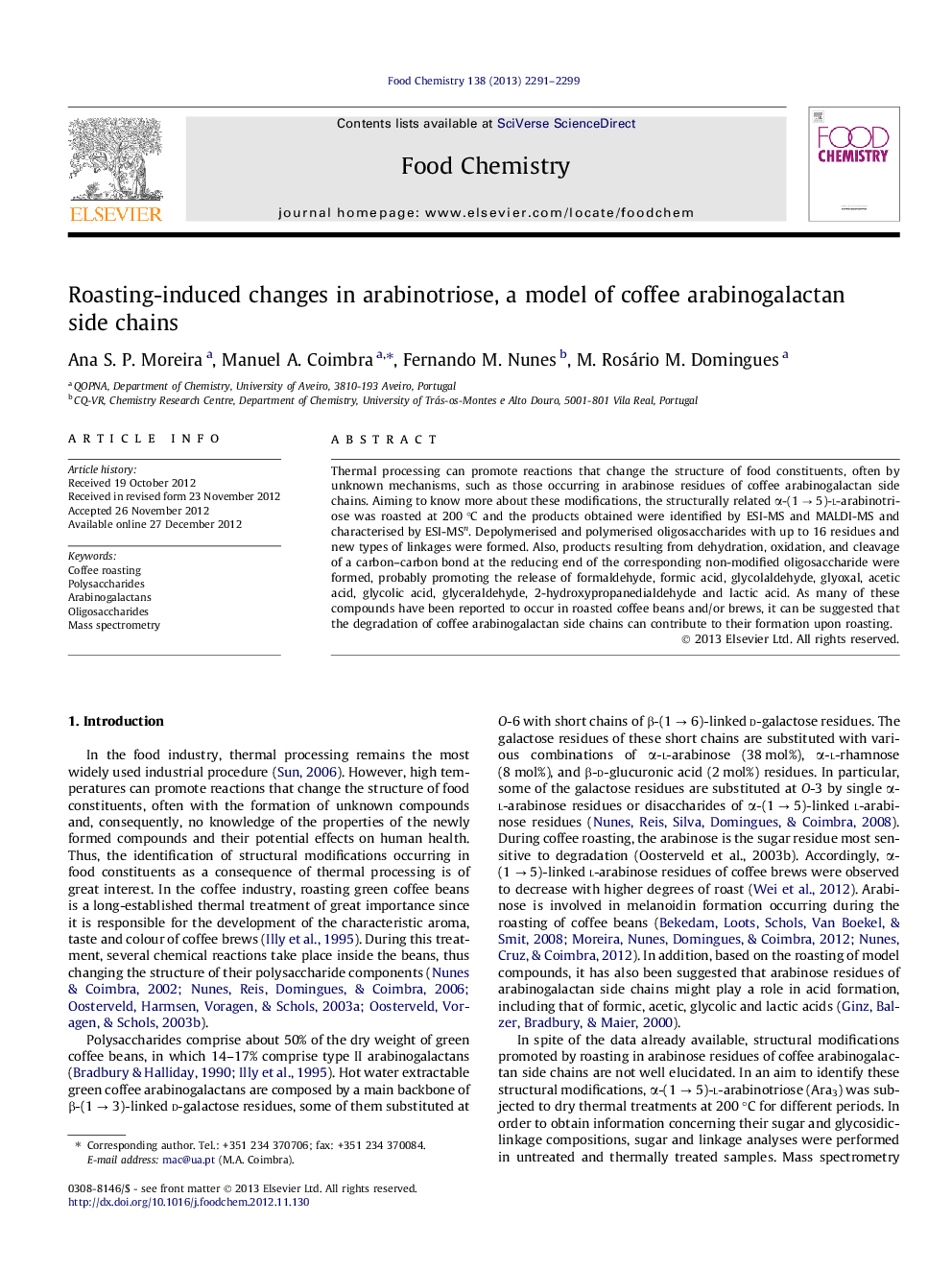| Article ID | Journal | Published Year | Pages | File Type |
|---|---|---|---|---|
| 1185513 | Food Chemistry | 2013 | 9 Pages |
Thermal processing can promote reactions that change the structure of food constituents, often by unknown mechanisms, such as those occurring in arabinose residues of coffee arabinogalactan side chains. Aiming to know more about these modifications, the structurally related α-(1 → 5)-l-arabinotriose was roasted at 200 °C and the products obtained were identified by ESI-MS and MALDI-MS and characterised by ESI-MSn. Depolymerised and polymerised oligosaccharides with up to 16 residues and new types of linkages were formed. Also, products resulting from dehydration, oxidation, and cleavage of a carbon–carbon bond at the reducing end of the corresponding non-modified oligosaccharide were formed, probably promoting the release of formaldehyde, formic acid, glycolaldehyde, glyoxal, acetic acid, glycolic acid, glyceraldehyde, 2-hydroxypropanedialdehyde and lactic acid. As many of these compounds have been reported to occur in roasted coffee beans and/or brews, it can be suggested that the degradation of coffee arabinogalactan side chains can contribute to their formation upon roasting.
